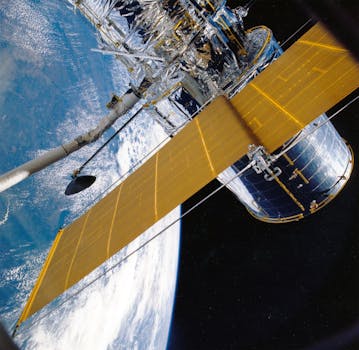Navigating the Skies: Insights into Recent Satellite Telecommunications Innovations

Navigating the Skies: Insights into Recent Satellite Telecommunications Innovations
Satellite telecommunications have come a long way since the launch of the first commercial satellite in 1962. Over the years, advancements in technology have enabled the development of more efficient, reliable, and cost-effective satellite systems. Recent innovations in satellite telecommunications have transformed the way we communicate and access information, and have opened up new opportunities for industries such as telecommunications, broadcasting, and navigation.
The use of satellite telecommunications has become increasingly important in recent years, particularly in areas where traditional communication infrastructure is lacking. Satellite systems can provide connectivity to remote and underserved areas, enabling access to vital services such as healthcare, education, and emergency services. Additionally, satellite telecommunications play a critical role in supporting global communications, including international voice and data traffic, as well as broadcasting and navigation services.
One of the most significant recent innovations in satellite telecommunications is the development of high-throughput satellites (HTS). HTS satellites use advanced technologies such as spot beams and frequency reuse to provide higher bandwidth and faster data speeds. This has enabled the provision of high-quality broadband services, including internet access, video streaming, and voice over internet protocol (VoIP) services, to a wide range of users, including consumers, businesses, and governments.
Another important innovation in satellite telecommunications is the use of satellite constellations. A satellite constellation is a group of satellites that work together to provide global or regional coverage. Satellite constellations can provide a range of services, including broadband, navigation, and Earth observation. The use of satellite constellations has enabled the provision of more efficient and cost-effective services, as well as improved coverage and availability.
In addition to HTS and satellite constellations, other recent innovations in satellite telecommunications include the development of advanced antenna technologies, such as phased array antennas and active electronically scanned arrays (AESAs). These technologies enable the use of smaller, lighter, and more efficient antennas, which can be used on a wide range of platforms, including satellites, aircraft, and ships.
The impact of these innovations on the satellite telecommunications industry has been significant. The use of HTS and satellite constellations has enabled the provision of more efficient and cost-effective services, which has driven growth and innovation in the industry. Additionally, the development of advanced antenna technologies has enabled the use of smaller and more efficient antennas, which has reduced the size and weight of satellite systems and improved their performance.
Furthermore, recent innovations in satellite telecommunications have also enabled the development of new applications and services, such as satellite-based broadband, navigation, and Earth observation. These services have a wide range of uses, including providing connectivity to remote and underserved areas, supporting global communications, and enabling the monitoring of the environment and natural resources.
In conclusion, recent advancements in satellite telecommunications have transformed the way we communicate and access information. The development of HTS, satellite constellations, and advanced antenna technologies has enabled the provision of more efficient, reliable, and cost-effective satellite systems. As the demand for satellite telecommunications continues to grow, it is likely that we will see further innovations and advancements in the industry, enabling the provision of even more efficient and effective services.
The integration of satellite telecommunications with other technologies, such as 5G and the Internet of Things (IoT), is also expected to drive growth and innovation in the industry. The use of satellite telecommunications in conjunction with these technologies will enable the provision of a wide range of new services and applications, including smart cities, autonomous vehicles, and precision agriculture.
Overall, the future of satellite telecommunications looks bright, with a wide range of innovations and advancements expected in the coming years. As the industry continues to evolve, it is likely that we will see significant improvements in the efficiency, reliability, and cost-effectiveness of satellite systems, enabling the provision of high-quality services to a wide range of users.
Satellite telecommunications have also played a critical role in supporting global communications, including international voice and data traffic, as well as broadcasting and navigation services. The use of satellite systems has enabled the provision of global coverage, enabling communication and access to information from anywhere in the world.
In addition to their use in supporting global communications, satellite telecommunications have also been used in a wide range of other applications, including Earth observation, weather forecasting, and disaster response. The use of satellite systems in these applications has enabled the provision of critical services, including monitoring the environment and natural resources, predicting weather patterns, and responding to natural disasters.
The development of new satellite technologies, such as HTS and satellite constellations, has also enabled the provision of more efficient and cost-effective services. The use of these technologies has driven growth and innovation in the industry, enabling the provision of high-quality services to a wide range of users.
In the future, it is likely that we will see significant advancements in satellite telecommunications, including the development of new technologies and the expansion of existing services. The integration of satellite telecommunications with other technologies, such as 5G and IoT, is also expected to drive growth and innovation in the industry.


